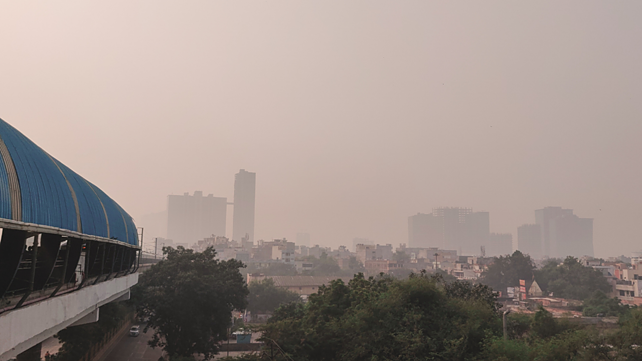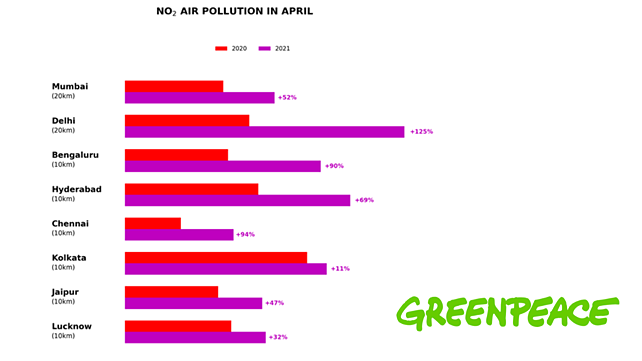
A year after the initial nationwide lockdowns due to Covid-19, NO2 (nitrogen dioxide) pollution has increased in India’s eight most populous state capitals, with Delhi observing the most dramatic increase of 125% between April 2020 and April 2021.
Greenpeace India’s recent report, titled “Behind the Smokescreen” studied the cities of Mumbai, Delhi, Bengaluru, Hyderabad, Chennai, Kolkata, Jaipur and Lucknow.
Mumbai’s NO2 air pollution was 52% higher, Bengaluru was up by 90%, Hyderabad by 69%, Chennai by 94%, Kolkata by 11%, Jaipur by 47% and Lucknow by 32% in April 2021 compared to the same month last year, Greenpeace reported.
Aided by satellite observations, Greenpeace India’s analysis also suggests the increase would have been greater had weather conditions been similar to 2020 (a 146% increase from 2020). The results of the weather-correction analysis confirm that the observed increase in NO2 pollution occurred primarily due to changes in emissions, while weather influence was only of secondary importance in most places, stated the study.

Severe impact on human health
Considered to be one of the most dangerous pollutants, NO2 is released when fuel is burned, mostly through motor vehicles, power generation, and industrial processes. The study notes that exposure to NO2 can severely impact people’s health at all ages, including the respiratory and circulatory systems and the brain, leading to increases in hospital admissions and mortality.
The severity of fossil-fuel related air pollution in the country has often been highlighted, and has in fact led to strict regulations. In the context of the current pandemic, it has been observed that polluted cities are significantly more impacted by the coronavirus.
The study states that despite knowing of all the ill effects of using fossil fuels, the country hasn’t been able to do much about its dependence on coal, oil and gas. Avinash Chanchal, Senior Climate Campaigner, Greenpeace India said this business as usual cannot continue.
“The disruption caused by the pandemic is a case to transition to cleaner, equitable and sustainable decentralised energy sources such as rooftop solar and clean & sustainable mobility must be central to recovery efforts across cities. The recovery from the pandemic must not come at the expense of a return to previous levels of air pollution,” Chanchal said.
While saying motor vehicles and industries based on fossil fuel consumption are the major drivers of NO2 pollution in Indian cities, Chanchal also called upon the governments, local administration and city planners to initiate a transition from privately owned vehicles to an efficient, clean and safe public transport system that is run on clean energy. The report has further called for cycling and pedestrian-friendly cities.